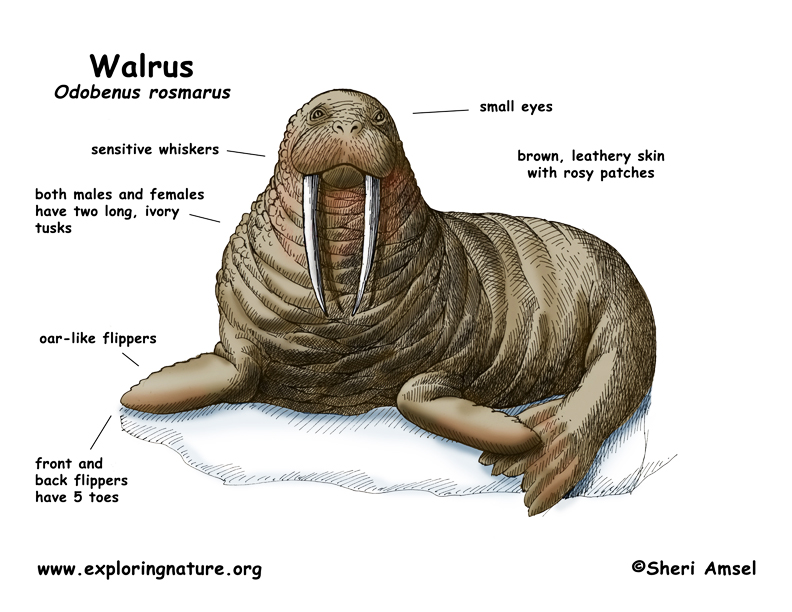

They are found in the Arctic Ocean above Scandinavia, Greenland and Canada.
They live in the ocean or on pack ice (sheets of ice on the Arctic Ocean) or on rocky beaches.
Males can be 10 feet long and weigh more than a ton (about 2,600 pounds). Females are much smaller at about 8 feet long and 1,800 pounds. They have 6 inches of blubber to keep them warm in Arctic temperatures. Their flippers are like oars, making them slow but strong swimmers. They can be brown to rosy pink. Both males and females have tusks, though the male's tusks are longer.
They use their tusks to pull themselves along on land (they are sometimes called “toothwalkers”). Males sometimes use their tusks to fight for territory. They can dive very deep for food.
They eat shellfish, like clams and mussels.
Their most dangerous predator is man, but they are also killed by polar bears and killer whales. Pollution also kills walruses.
Females have one calf every 2-3 years.
They can live for 40 years. They are listed as Lower Risk - least concern.
Kingdom: Animalia
Phylum: Chordata
Subphylum: Vertebrata
Class: Mammalia
Order: Carnivora
Suborder: Caniformia
Family: Odobenidae
Genus: Odobenus
Species: Odobenus rosmarus
When you research information you must cite the reference. Citing for websites is different from citing from books, magazines and periodicals. The style of citing shown here is from the MLA Style Citations (Modern Language Association).
When citing a WEBSITE the general format is as follows.
Author Last Name, First Name(s). "Title: Subtitle of Part of Web Page, if appropriate." Title: Subtitle: Section of Page if appropriate. Sponsoring/Publishing Agency, If Given. Additional significant descriptive information. Date of Electronic Publication or other Date, such as Last Updated. Day Month Year of access < URL >.
Amsel, Sheri. "Walrus" Exploring Nature Educational Resource ©2005-2024. December 13, 2024
< http://www.exploringnature.org/db/view/Walrus >

